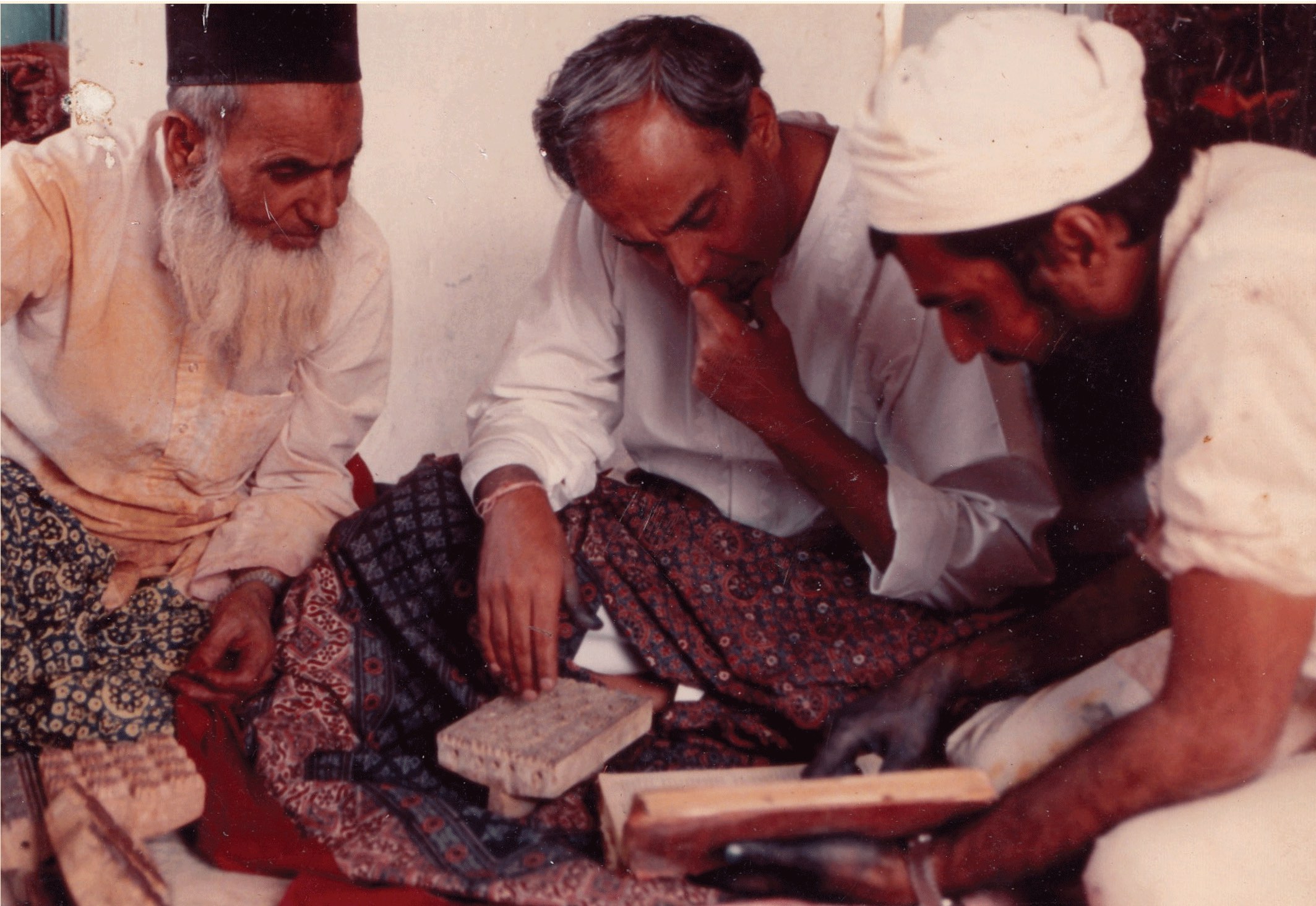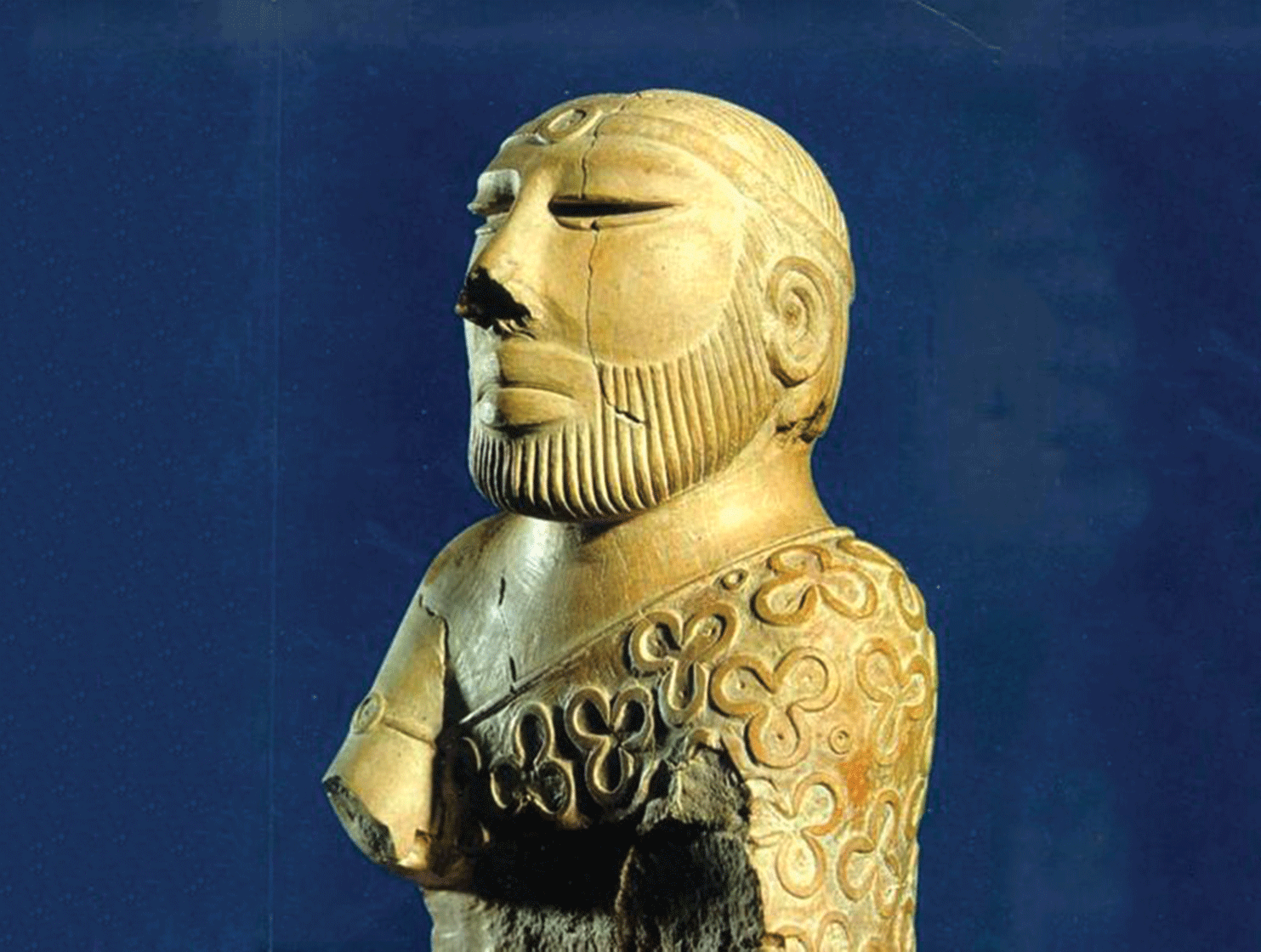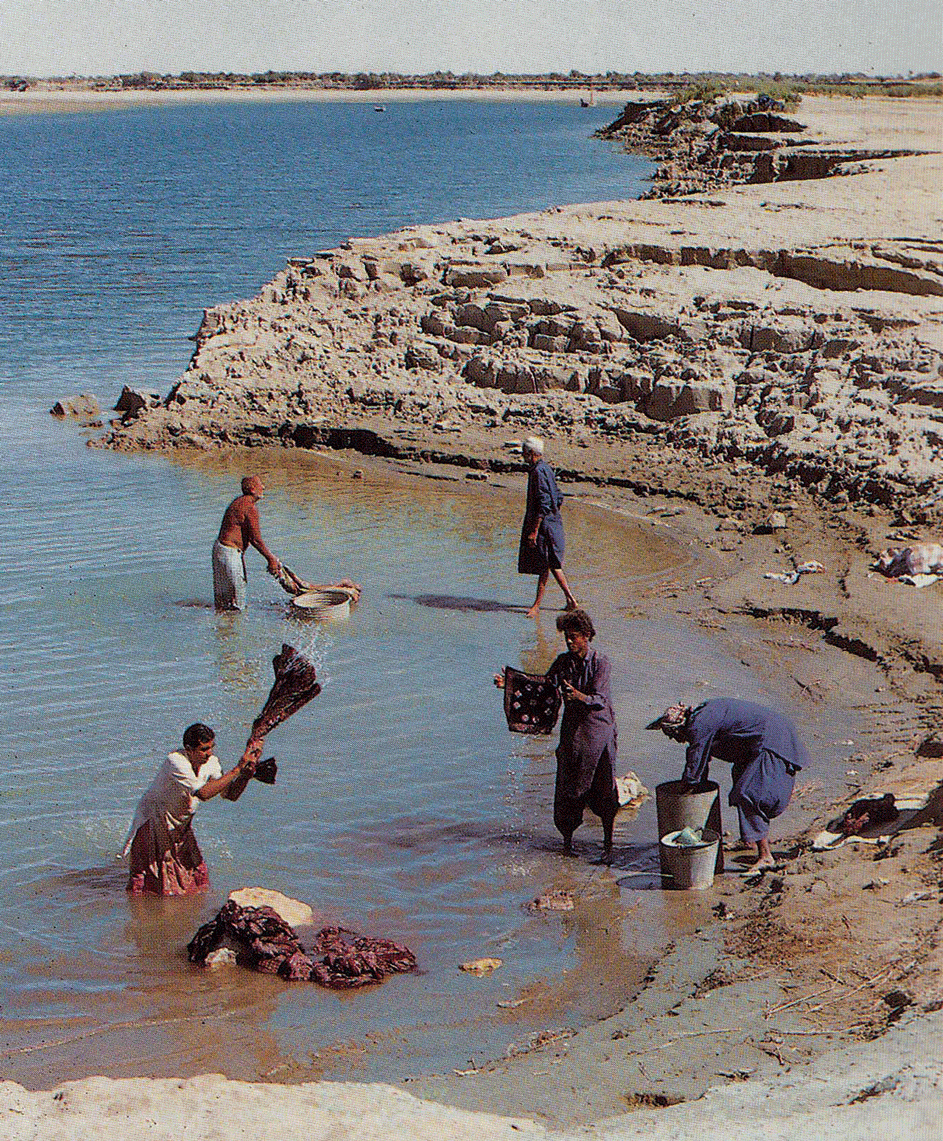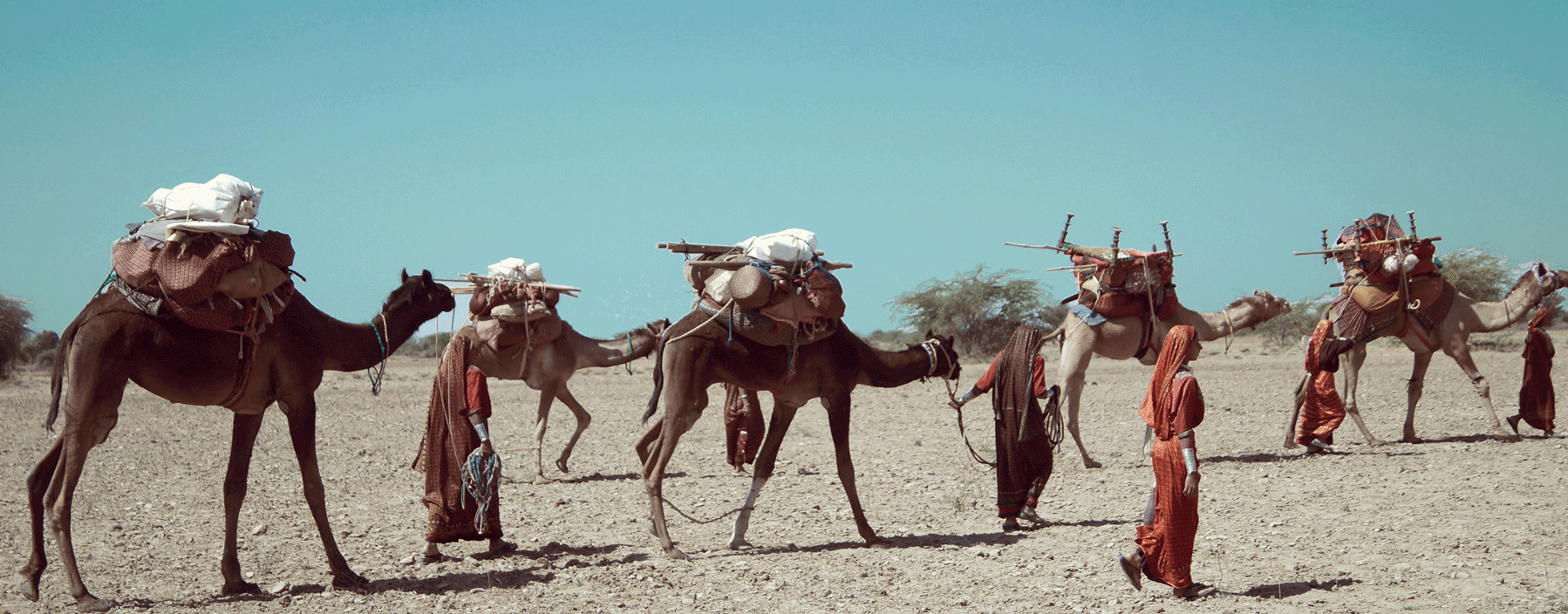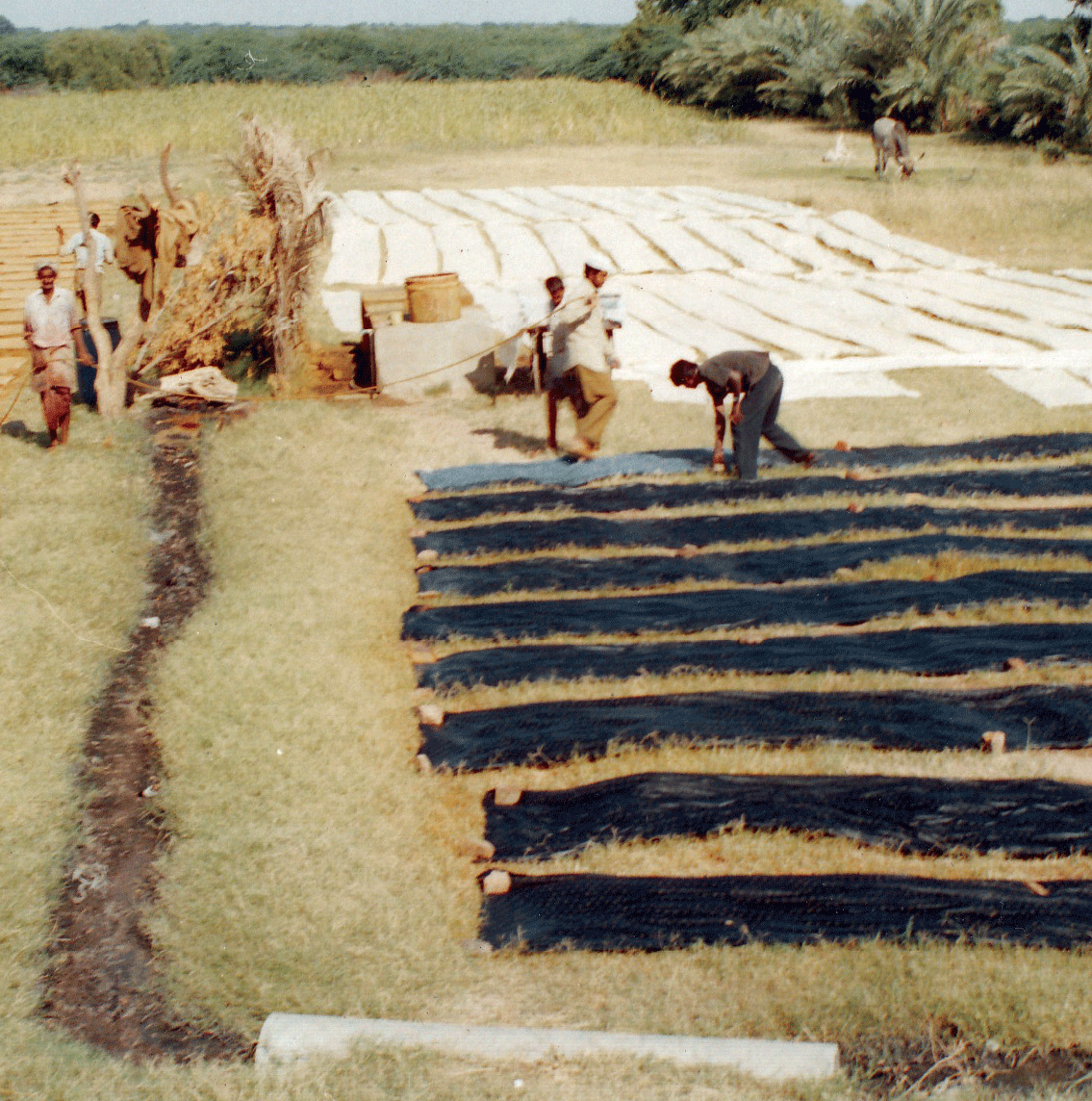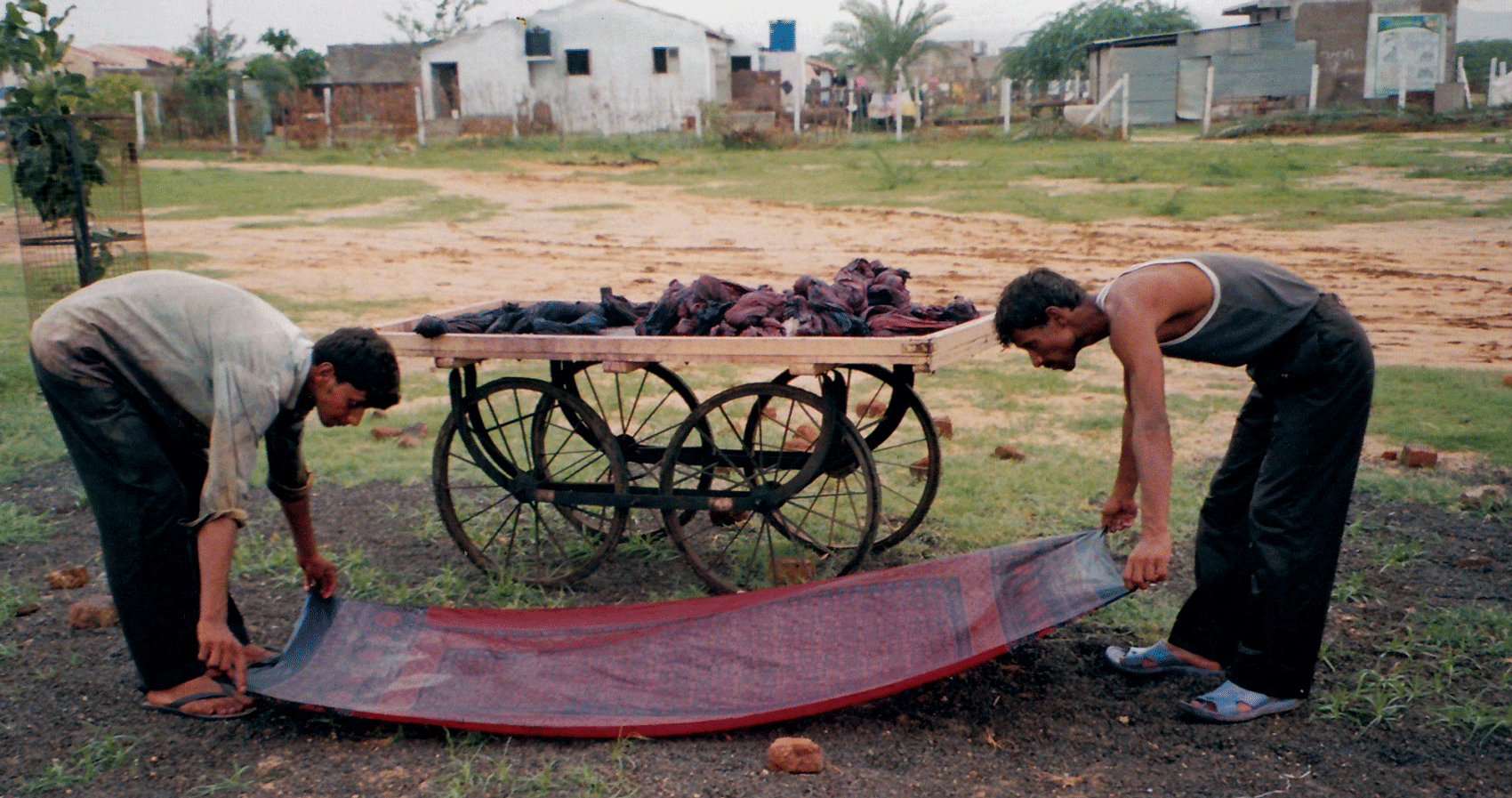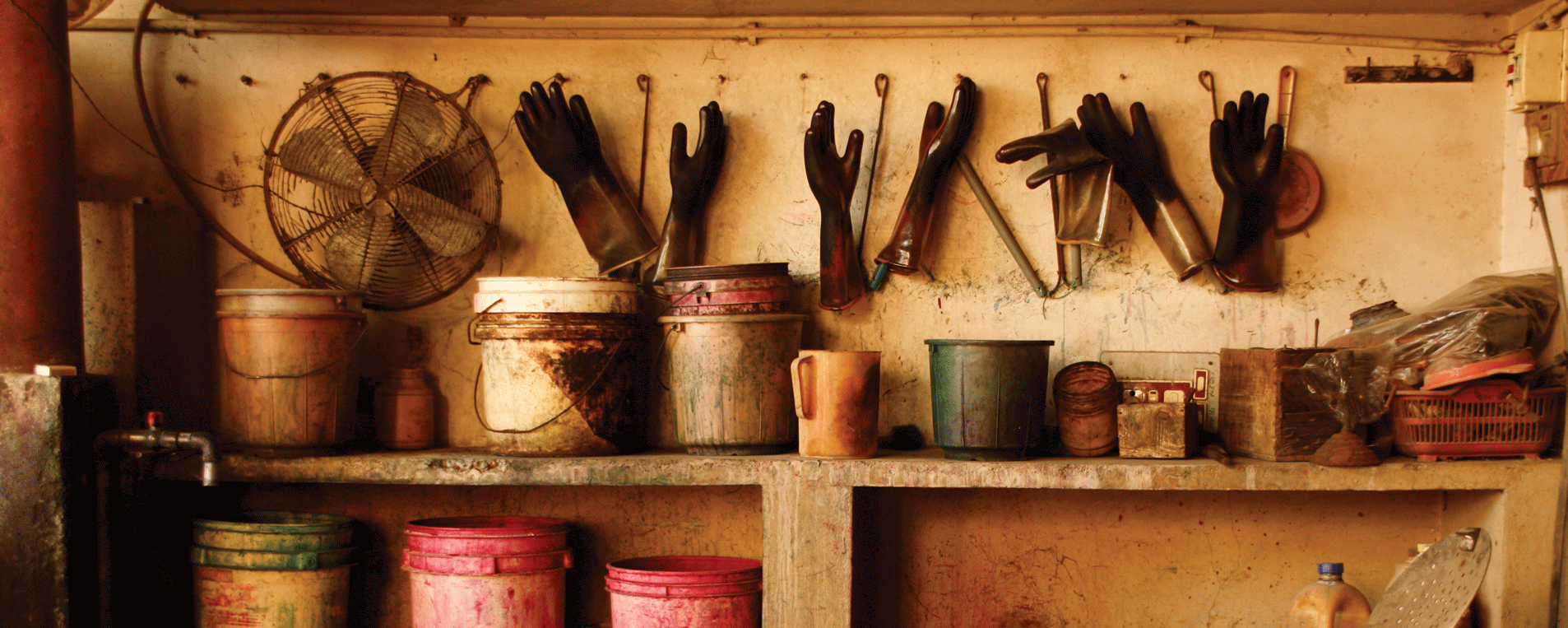
Part 1
The Khatris and their community
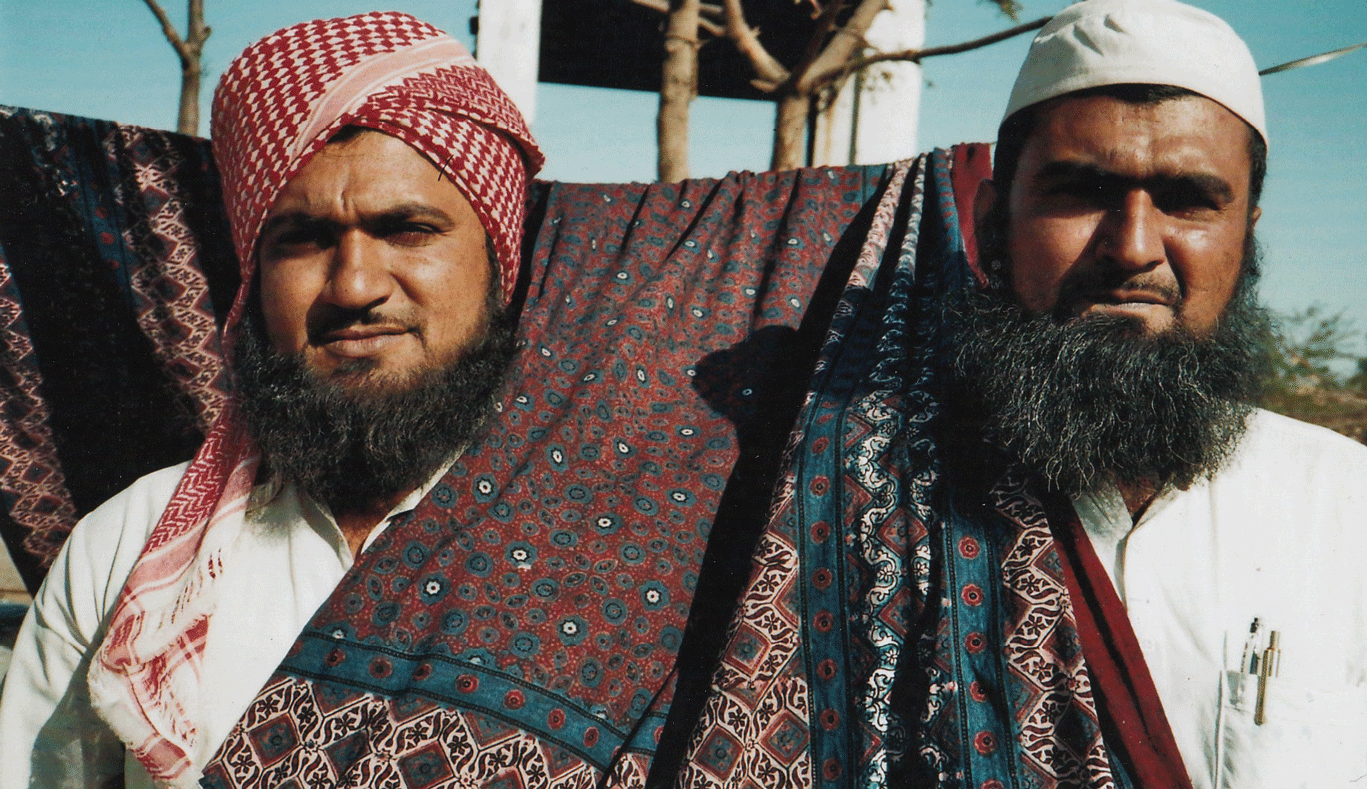
Ajrakh is what we are known for
“Ajrakh is inspired by Brahma, the universe. The blues and the reds of the evening sky and the stars are all inspiration for our cloth. Ajrakh is an Islamic design art with no figures. Everything is crafted using geometrical forms. No other craft’s identity has survived for so long.”
Read full article ⟶
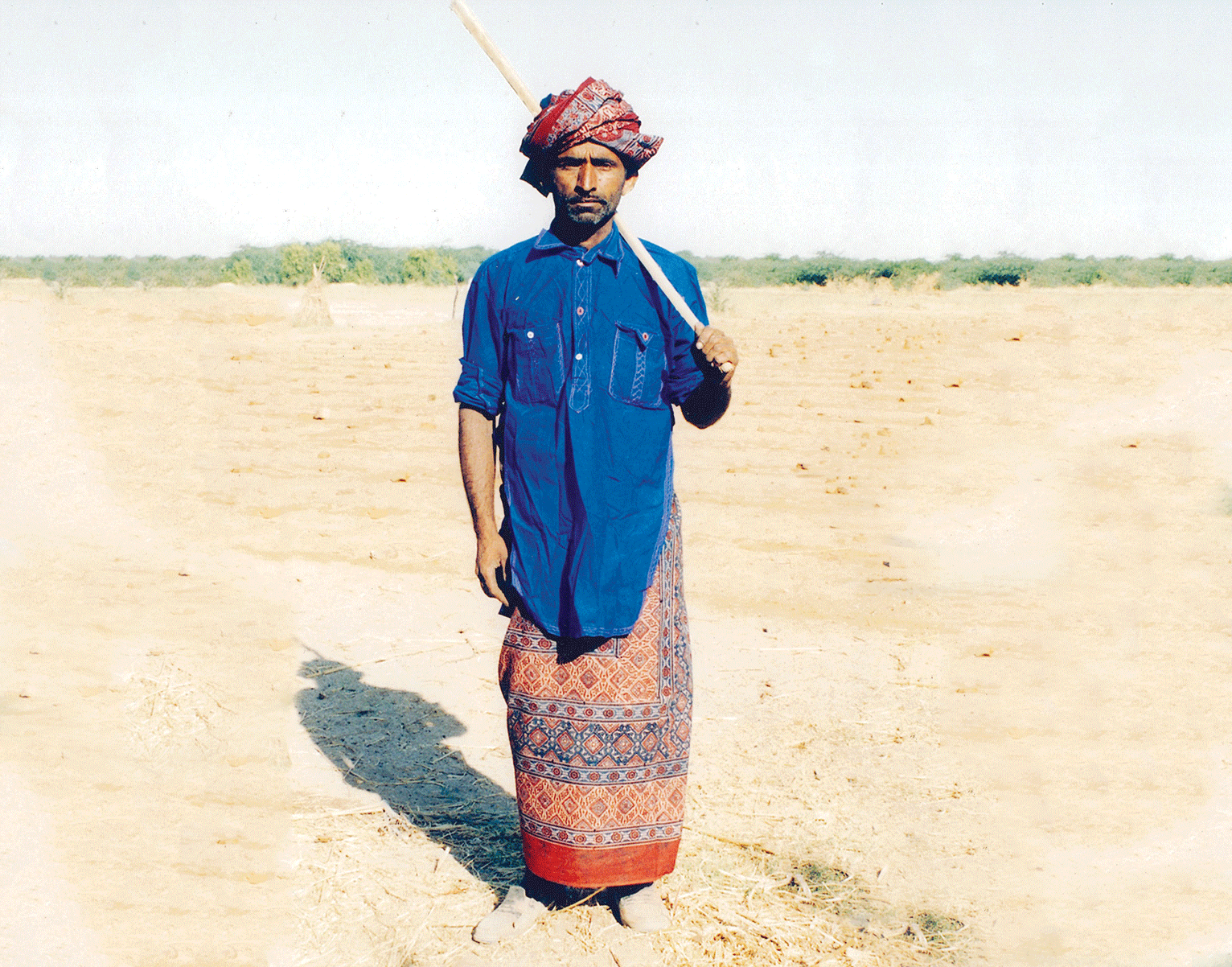
Our cloth is their identity
“There was a carpenter, a weaver, and a potter in every village. The need for cloth in the village was met with the weaver of the village itself. The Khatri people would do the work of the bandhani, the printing, and the coloring according to the needs of each community."
Read full article ⟶
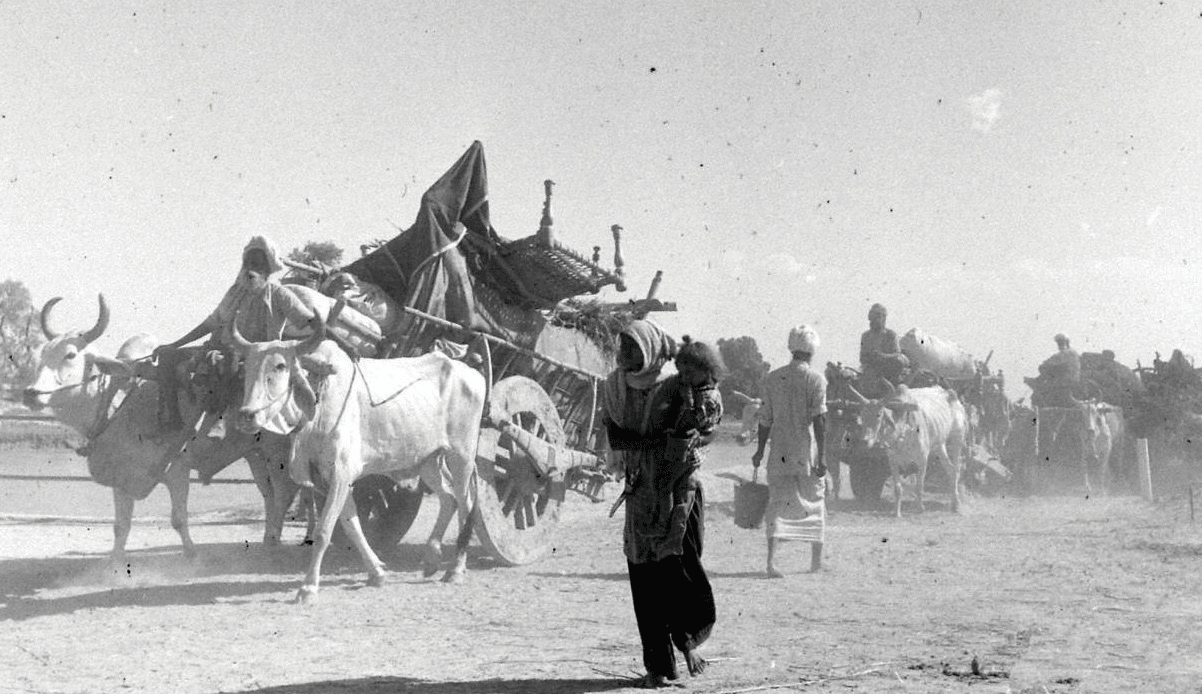
The country divided; we lost our trade routes
In 1947, India and Pakistan were divided. It was no longer possible to cross the border and the trade between East Kachchh and Sindh collapsed completely. Soon, industrialization in India began which affected trade with the local communities who started wearing cloth produced by mills.
Read full article ⟶
Part 2
The art of Ajrakh
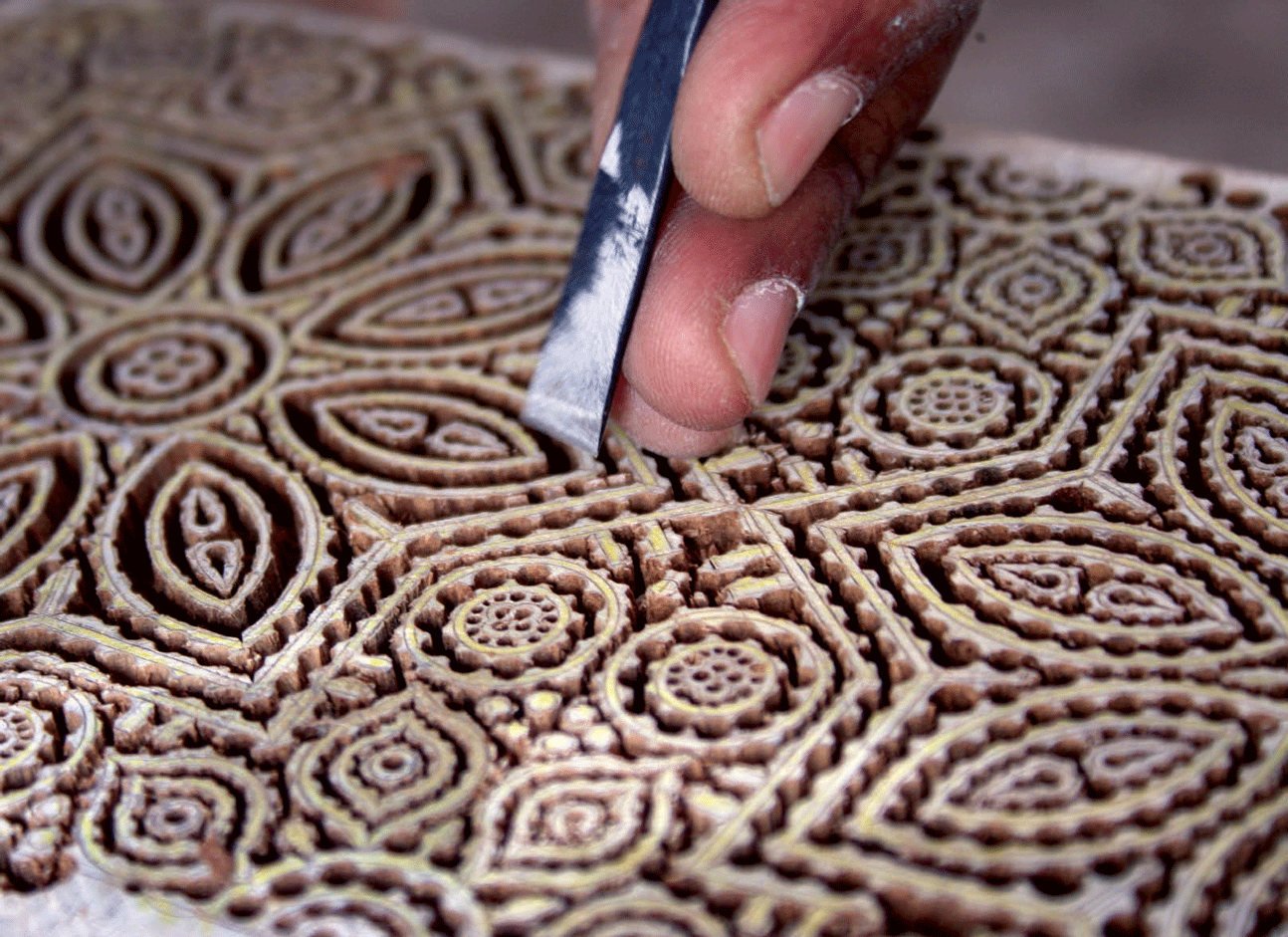
Crafting the blocks
“You can only learn this craft when you are 8-12 years old. if you try to learn when you are twenty your fingers would have already become tight and they are no longer flexible for block making. When I was 14 years I learned to carve a block. I never used to make designs on paper. When I thought of a design I would directly draw it on the wood and carve it out.”
Read full article ⟶
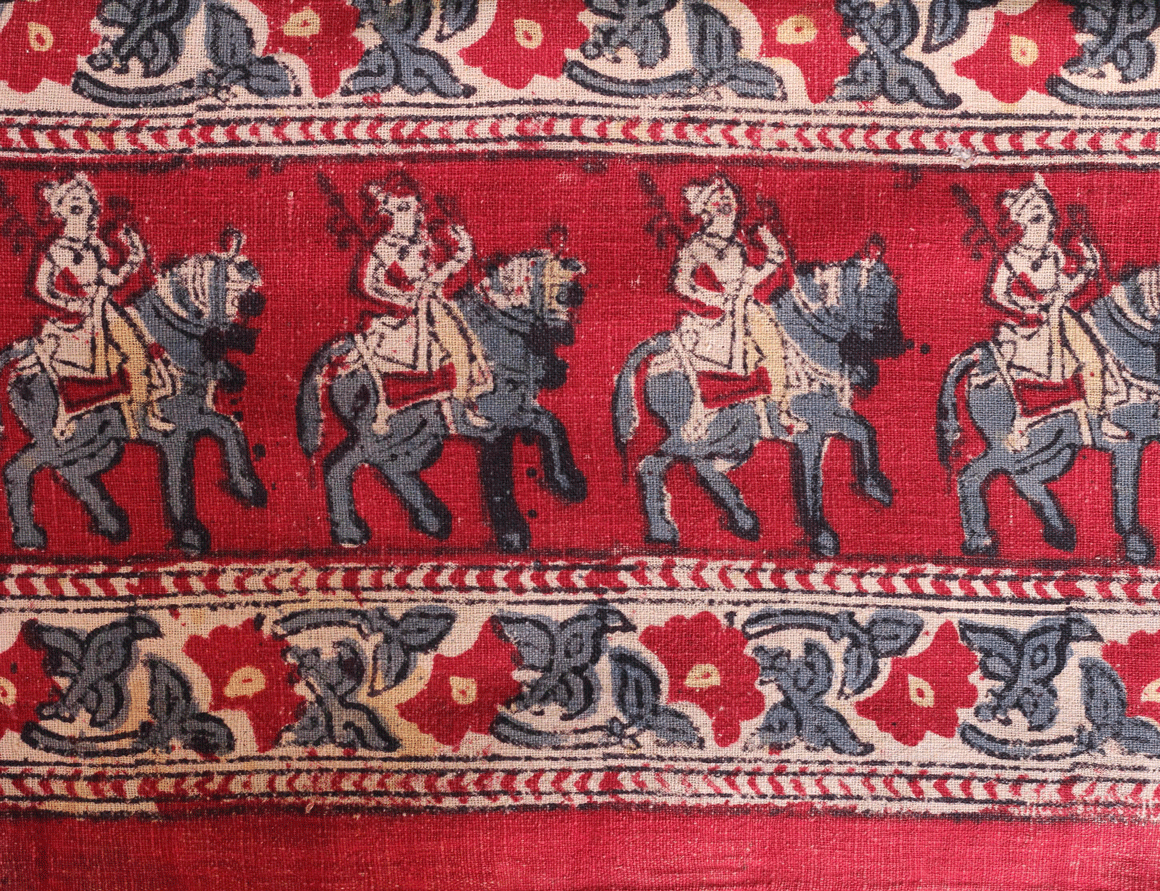
The lost colors of West Kachchh
Known as Patthar printing in these areas, this genre closely resembles the stylized forms of the Sirakh. The communities known to print them were both Muslims and Hindus. The Hindus were settled mostly in the Nana and Mota Angiya villages of Nakhatrana.
Read full article ⟶
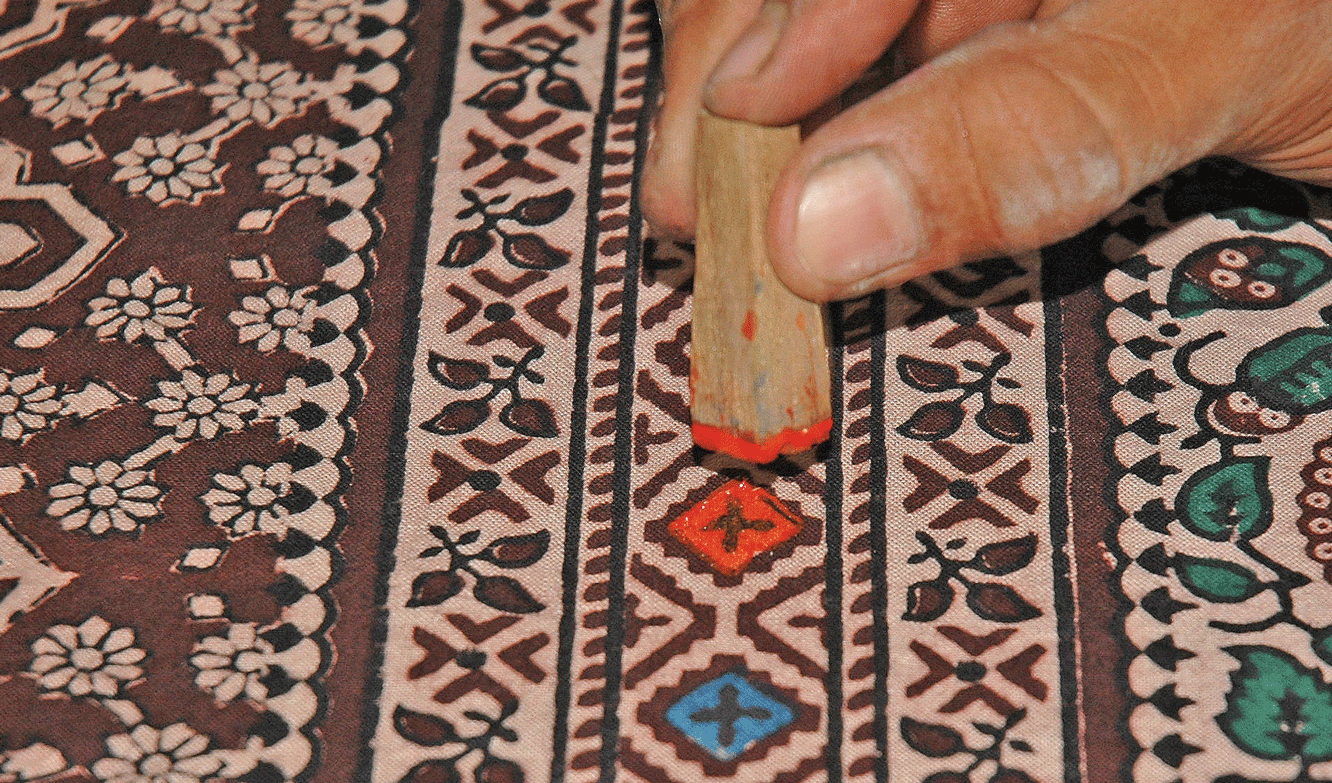
The one piece we made for ourselves
The artistic sirakh, a printed bedcover, uses a lesser known traditional style of hand block printing. It is made of bandhani or block print, and its design is believed to be a precursor to Ajrakh. The patterns used were very floral and free flowing.
Read full article ⟶
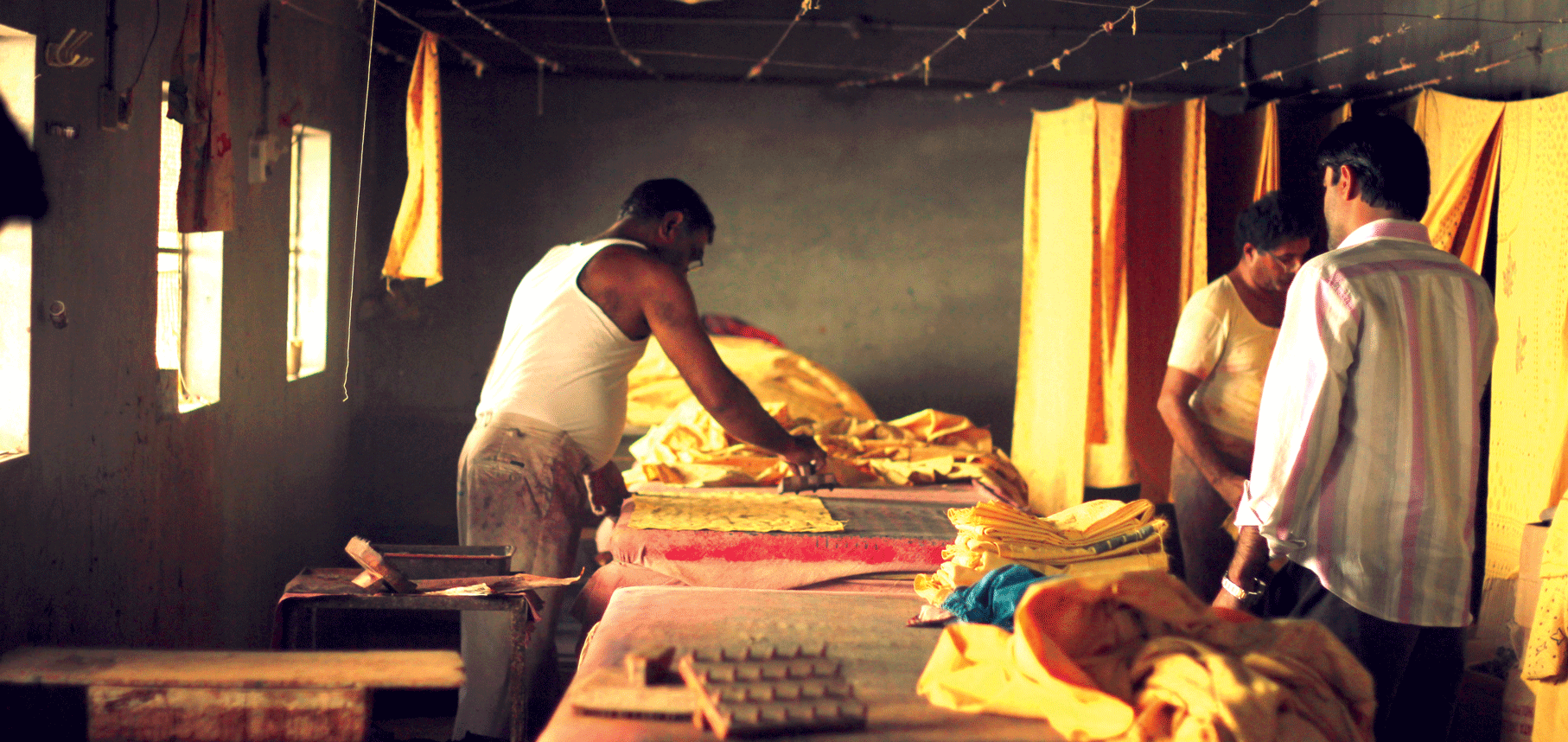
The era of chemical dyes
By the early 1950s, synthetic dyes had replaced most of the natural color in the Indian textile market because of their cheapness and ease of use. Simultaneously, local printing workshops were being threatened by large industrial factories in Mumbai and Ahmedabad that could produce cloth faster.
Read full article ⟶

The batik boom
The special look of Batik in Kachchh developed by coincidence when artisans started using paraffin wax. The character of paraffin wax was such that it would crack while dyeing and leave fine lines of colors on the cloth. Earlier, fabrics displaying these cracks were considered as poor quality, but over time it evolved as the identity of Batik textiles from the region.
Read full article ⟶
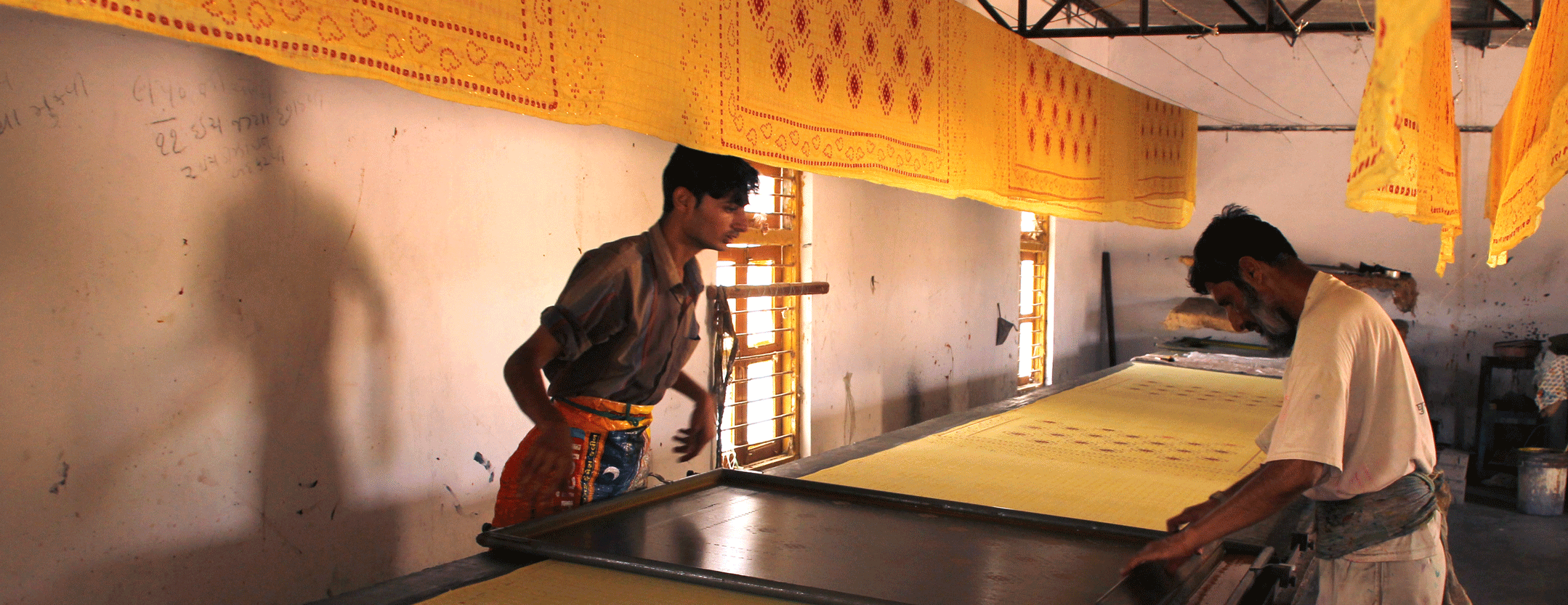
From a block to a screen
Growing competition with factories pushed artisans to embrace changing technologies. Instead of the elaborate hand block print, artisans started shifting to mass production in screen print. The new screen printed fabrics were lighter, brighter, and cheaper than block printed fabrics.
Read full article ⟶
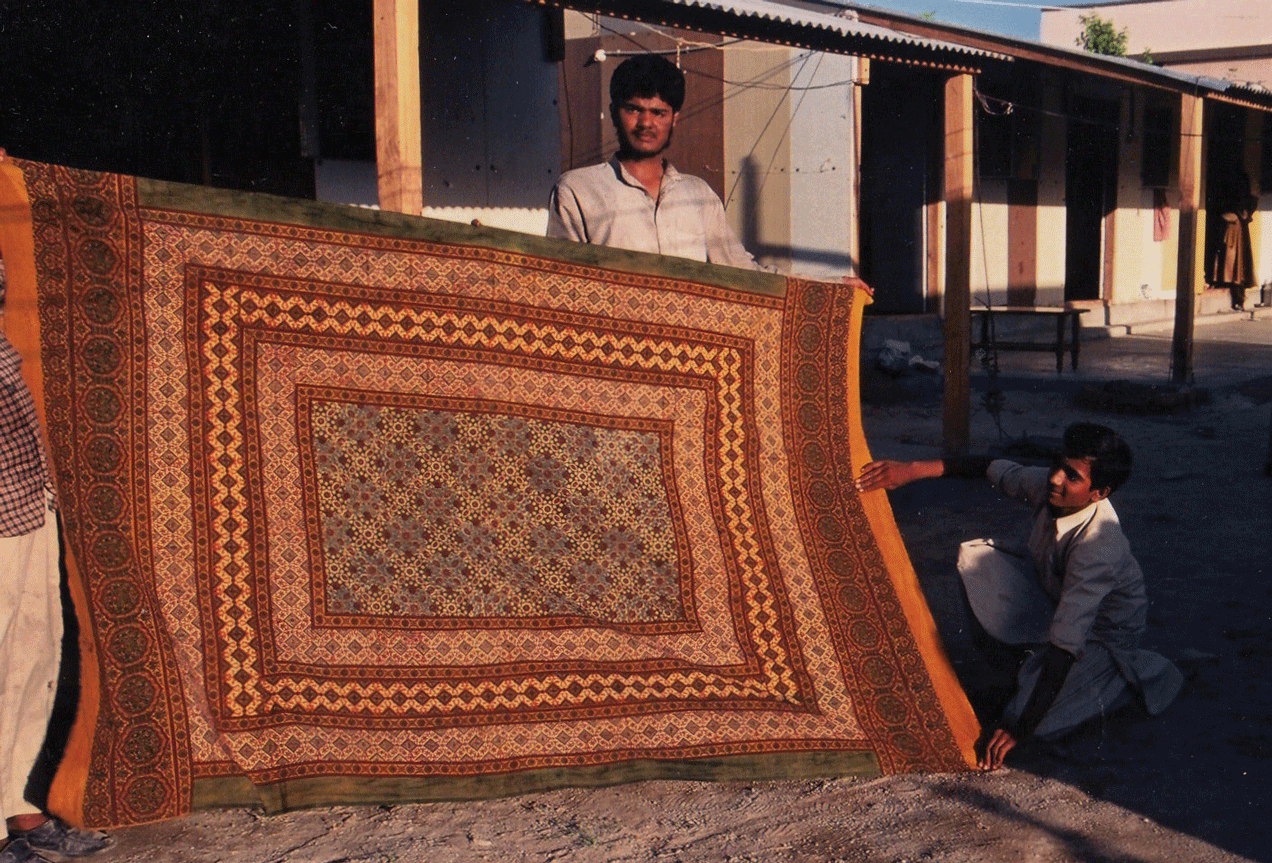
Back to the roots
The rise of factories had nearly buried the value of handicraft. In the 1970s a period of reflection started. The Gandhian idea of India as a “craft nation” became popular again and many states in India initiated programs to support traditional craft artisans in finding new markets.
Read full article ⟶
Part 3
Adapting to the present
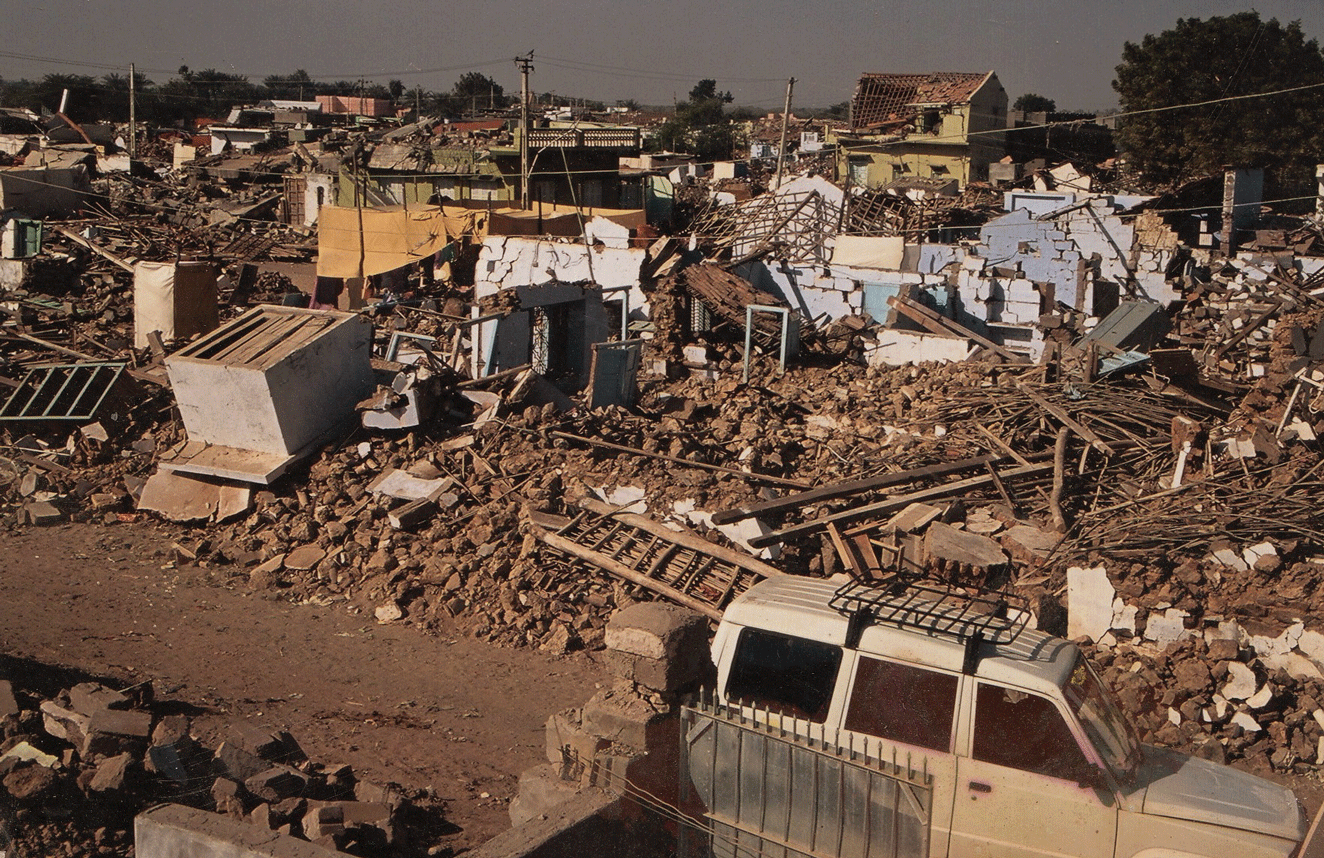
Everything was broken
Disaster struck the region of Kachchh and the Khatris for the second time in 50 years. In 2001, a fatal earthquake took the lives and homes of thousands of people. Dhamadka, the heart of the block printing community, was completely destroyed. A tenth of the population died instantly.
Read full article ⟶
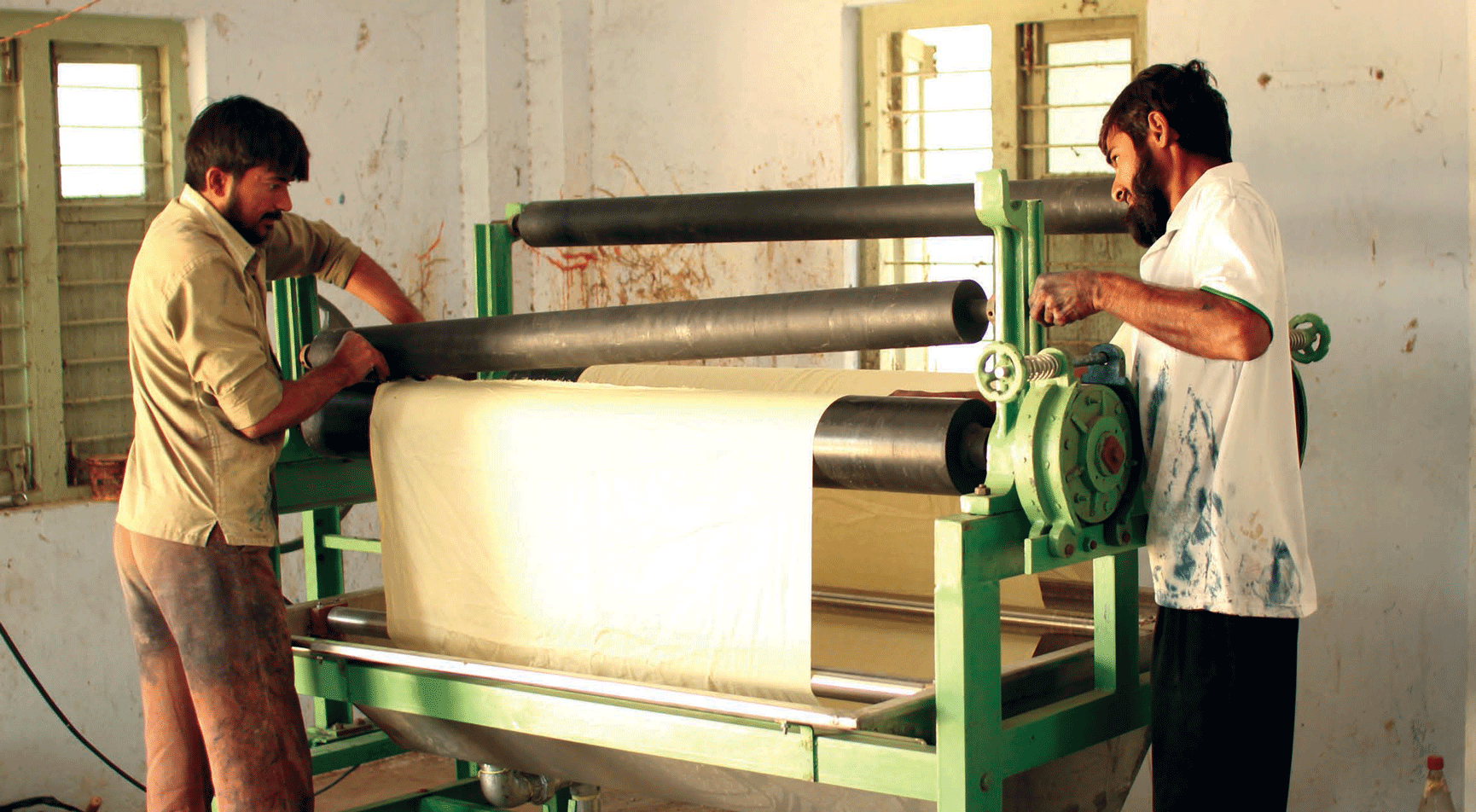
New expressions and explorations
Today many Khatris work with international fashion designers and retailers. This opens more opportunities but demands high quality in work and innovative ways of design. The design school of Kala Raksha Vidhyalaya has empowered artisans to explore new artistic expressions.
Read full article ⟶
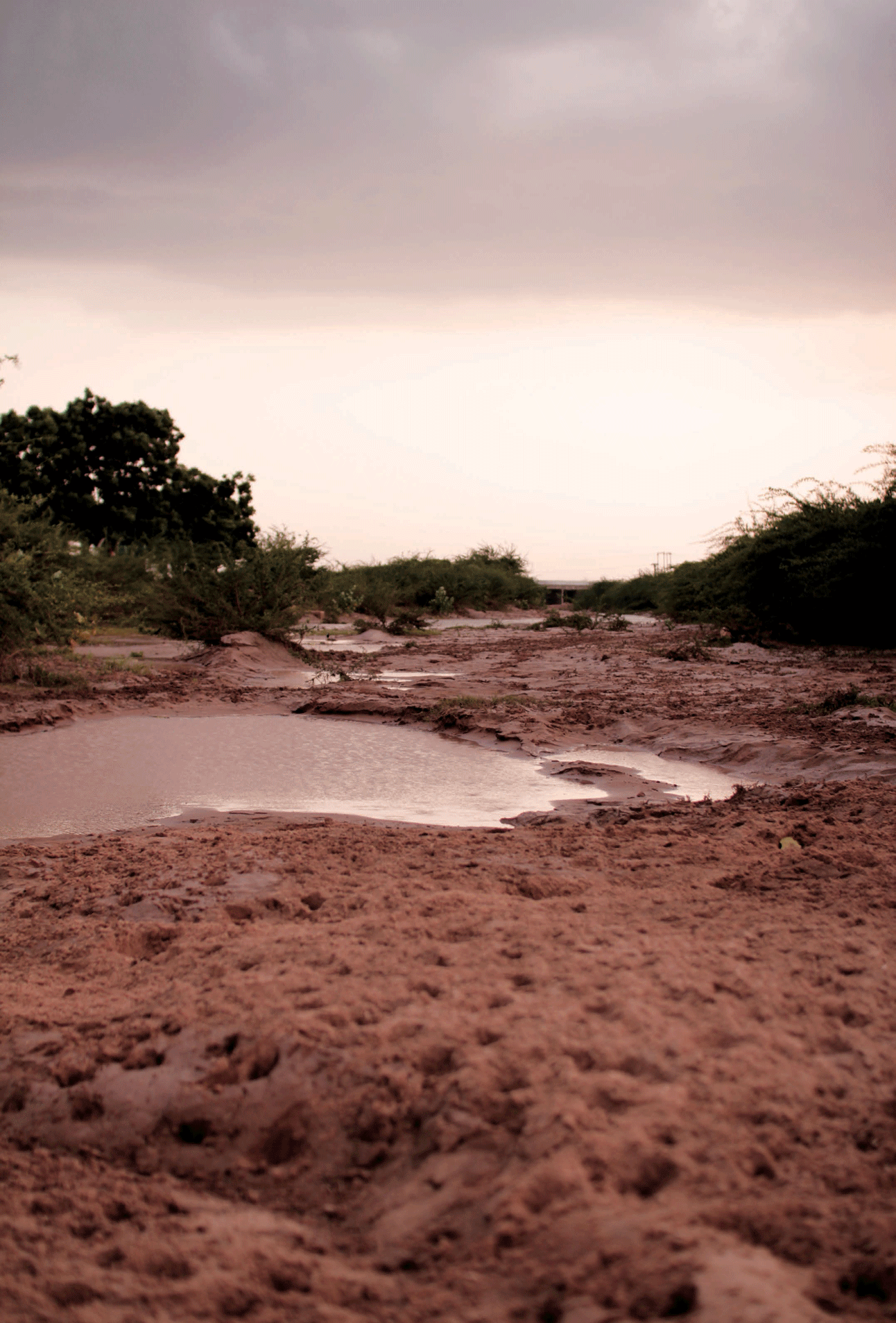
We are running out of water
While Ajrakhpur was selected due to its good water source, the water tables are lowering and the need of a sound water managemtn plan is being discussed by the block printers along with various organizations and experts. As of yet, a comprehensive plan has yet to emerge.
Read full article ⟶
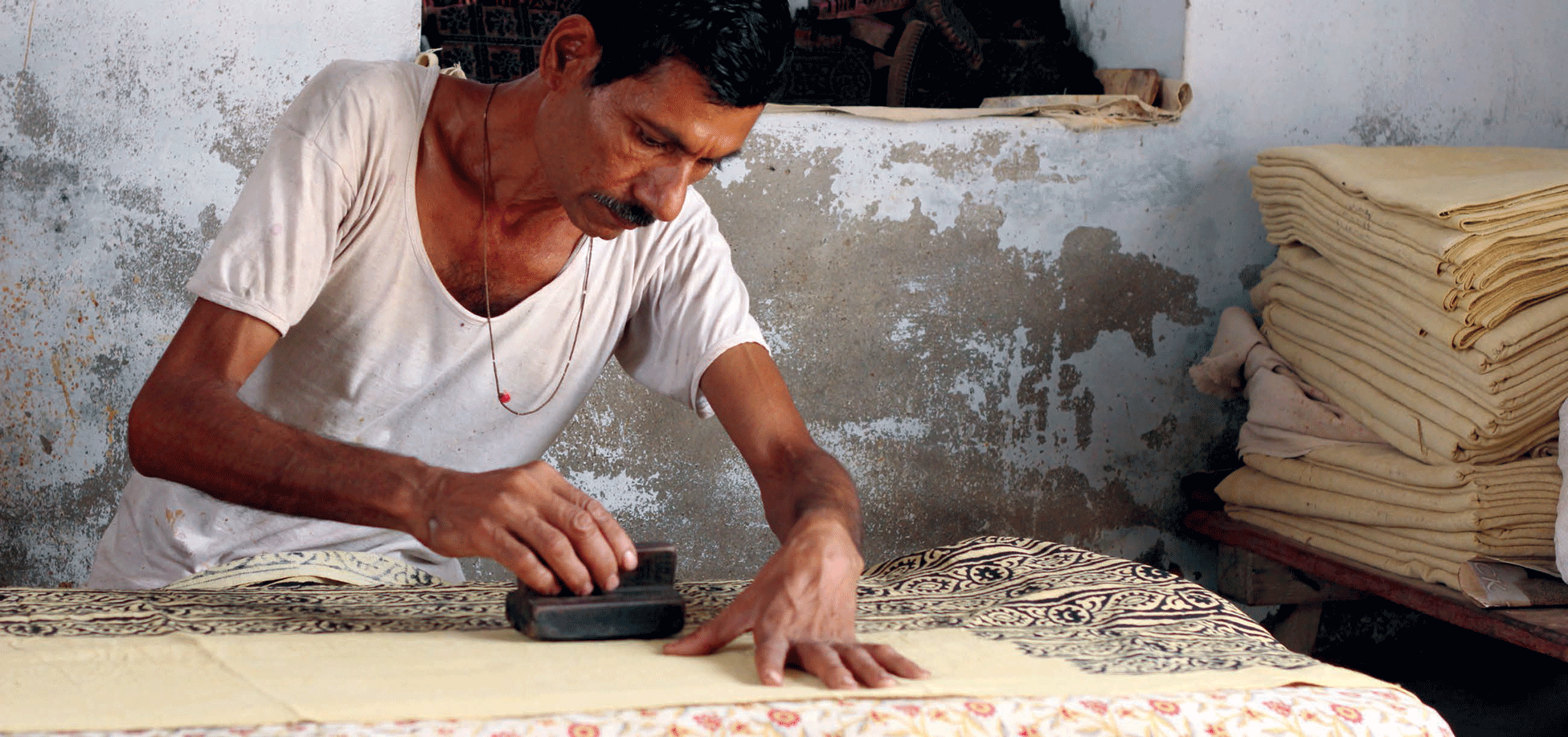
Working with our mind, our hands, and our heart
Like traditional crafts everywhere, the future often feels uncertain. But in Kachchh there are both fears and hopes. There is an emerging younger generation that sees the potential and growth of their traditional businesses and dare to imagine new futures.
Read full article ⟶

